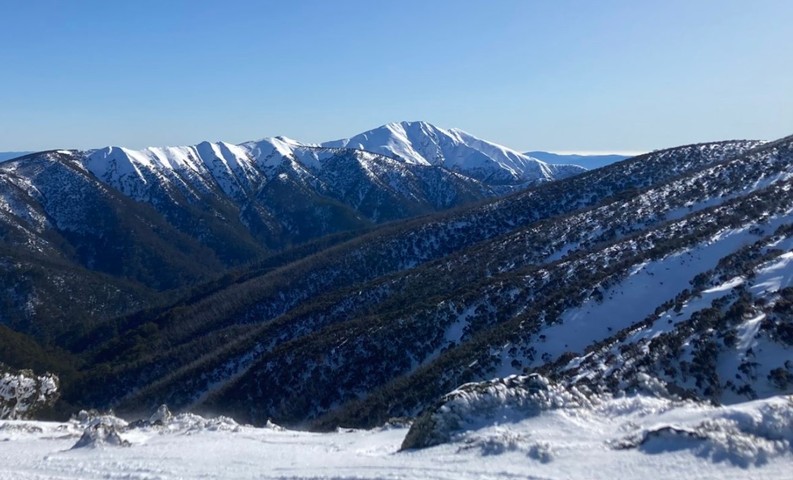Learn About the Best-Known and Snow-Covered Destinations In Australia
Learn About the Best-Known and Snow-Covered Destinations In Australia
Blog Article
Understanding the Relevance of Snow in Australia for Farming and Tourist
While Australia is usually connected with sun-kissed beaches and dry outback, it also flaunts a wealth of snowy towering areas. The snow that blankets these regions is even more than an attractive landscape feature. It acts as a lifeline for the nation's farming and a driving pressure for a profitable tourist sector. As we examine this surprising crossway, the possible influence of changing environment patterns on Australia's snowfall and its subsequent results come to be a compelling focus.
The Unexpected Snowfall: Australia's Alpine Regions
When winter months capes the globe, Australia's Towering areas put on a white mantle of snow, a spectacle that seems virtually paradoxical in this dominantly sun-baked land. Unlike the stereotyped picture of Australia as a land of coastlines and deserts, these areas use a unexpected and beautiful contrast. The Australian Alps, extending throughout New South Wales, Victoria, and the Australian Capital Territory, obtain even more snowfall than Switzerland. This unexpected wintertime heaven offers a special environment, giving a habitat for a number of native types and a snowy play area for winter sports fanatics. The annual snowfall, although not as plentiful as in some countries, is a crucial facet of Australia's environment diversity and plays a considerable duty in the nation's farming techniques and tourism market.
Winter season's Bounty: Snow's Contribution to Australia's Water Resources
In spite of its rarity in the wider landscape of Australia, snow in the Towering areas plays an important function in the nation's water resources. Working as an all-natural tank, the snowpack stores water throughout the cold months, progressively launching it right into rivers and dams as it melts in warmer seasons. This procedure guarantees a stable supply of water, helping in the stabilization of the country's water cycle. This is specifically critical for Australia, a continent often pestered by dry spells. Furthermore, the snowmelt feeds right into the Murray-Darling Basin, a lifeline for several neighborhoods in the southeastern parts of the country. Without the bounty of wintertime snow, Australia's water sources would certainly be substantially stressed, affecting both the setting and the populace.
White Blanket, Eco-friendly Area: The Influence of Snow on Australian Agriculture
Although much less noticeable, the impact of snow on Australian agriculture is significant. Snowfall in the high country acts as an all-natural type of irrigation, gradually melting and giving a steady supply of water to lower-lying farmland. This water-rich environment promotes the development of durable plants, adding to the nation's agricultural efficiency. Furthermore, snowfall enhances soil health by presenting moisture and trapping nutrients, which are gradually launched as the snow melts. This procedure improves the soil, cultivating the development of healthier, extra resistant plants. Additionally, snow cover works as a protective blanket, shielding go to website the ground versus severe winter months temperature levels that might otherwise harm crops. Hence, the function of snow in Australian farming is both vital and multifaceted.

Money: Snow Tourist and Its Economic Relevance in Australia
While the value of snow to Australian farming is usually undervalued, its contribution to the nation's tourism sector is unquestionably considerable. The snow-laden peaks of Australia's alpine regions draw in a flurry of tourists every wintertime, adding millions to the national economic climate. Therefore, the economic relevance More Help of snow tourist in Australia prolongs much beyond the slopes.
Future Forecast: Climate Change and Its Potential Results on Australia's Snowfall
As the world faces the truth of environment change, so as well must Australia contemplate its possible effects on the nation's snowfall. Present clinical designs forecast a decline in Australian snowfall, with possibly serious effect on both farming and tourism. In some locations, the snow period could be reduced by as much as 80 days by 2050. Such modifications intimidate the viability of Australia's ski industry, which adds significantly to the local economic climate. Much less snowfall might additionally influence the country's agricultural field, as snowmelt plays an important visit their website role in sprinkling plants. The prospective impacts of these modifications highlight the necessity of environment change reduction efforts, both in Australia and worldwide.
Conclusion
In conclusion, snow is a critical component of Australia's farming and tourist industries. The impending hazard of environment modification raises worries concerning the future of Australia's snowfall patterns, possibly disrupting these significant financial sectors.

When wintertime cloaks the globe, Australia's Towering regions put on a white mantle of snow, a spectacle that seems practically paradoxical in this dominantly sun-baked land.Regardless of its rarity in the broader landscape of Australia, snow in the Alpine regions plays a critical function in the nation's water resources. Without the bounty of winter snow, Australia's water sources would be considerably strained, impacting both the environment and the population.
Hence, the economic significance of snow tourism in Australia extends far past the inclines.
In verdict, snow is an essential element of Australia's agricultural and tourist markets. Does It Snow In Australia.
Report this page